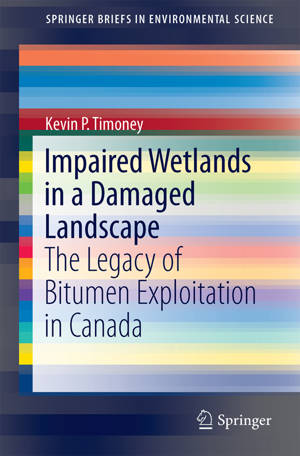
- Afhalen na 1 uur in een winkel met voorraad
- Gratis thuislevering in België vanaf € 30
- Ruim aanbod met 7 miljoen producten
- Afhalen na 1 uur in een winkel met voorraad
- Gratis thuislevering in België vanaf € 30
- Ruim aanbod met 7 miljoen producten
Zoeken
Impaired Wetlands in a Damaged Landscape
The Legacy of Bitumen Exploitation in Canada
Kevin P. Timoney
€ 83,95
+ 167 punten
Omschrijving
This work is a scientific monograph that examines the flora and vegetation of natural mineral wetlands in comparison to mineral wetlands affected by bitumen exploitation. The work is of broad relevance because (a) wetland loss and degradation is a global problem; (b) the continued global increase in fossil fuel exploitation is resulting in widespread damage; and (c) bitumen (tar sands, oil sands) exploitation is a rapidly growing and destructive set of activities. The core of the work is a meta-analysis of 417 vegetation plots. Analyses of change over time and chemical and physical attributes of water and soil are presented for the subset of plots with sufficient data. The purpose of the work is to demonstrate that: (1) There are marked differences between natural and industrially-affected wetlands. (2) Industrially-affected mineral wetlands differ from natural wetlands in their vegetation assemblages, their depressed vegetation and species diversity, and their abundance of exotic weeds. (3) Successful post-bitumen mining wetland reclamation has not been accomplished and may not be attainable within the foreseeable future given the ecological and physical conditions of the industrial wetlands, current reclamation practices, and lax regulatory standards. In regard to government policy and industrial practices, it finds that they are responsible for reclamation failure on a grand scale.
Specificaties
Betrokkenen
- Auteur(s):
- Uitgeverij:
Inhoud
- Aantal bladzijden:
- 218
- Taal:
- Engels
- Reeks:
Eigenschappen
- Productcode (EAN):
- 9783319102344
- Verschijningsdatum:
- 2/07/2015
- Uitvoering:
- Paperback
- Afmetingen:
- 155 mm x 235 mm
- Gewicht:
- 359 g

Alleen bij Standaard Boekhandel
+ 167 punten op je klantenkaart van Standaard Boekhandel
Beoordelingen
We publiceren alleen reviews die voldoen aan de voorwaarden voor reviews. Bekijk onze voorwaarden voor reviews.








